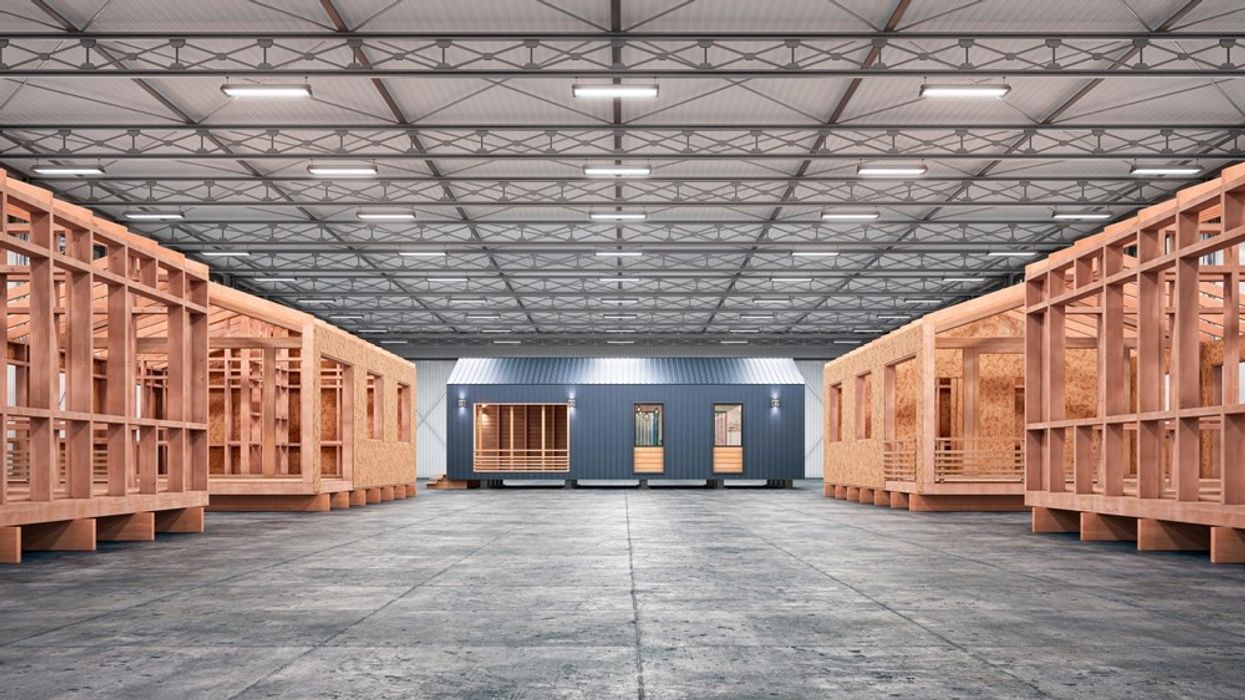With 5.8 million new homes needed in Canada by 2031, and the homebuilding sector increasingly under the gun to produce more units, it is time to look towards offsite construction.
This building method – whereby most of a home is manufactured in a plant and trucked to a location – is certainly not the only solution to what ails the housing sector, but it could move the needle.
I recently toured a Bonneville Homes modular housing factory in Beloeil, Que., with other RESCON staff. We were nothing short of impressed at the quality of the product. With productivity in the homebuilding sector increasingly under the microscope and the need for rapid construction of new homes in Ontario, it could be the time for offsite construction to shine.
Nationally, we are not producing anywhere near the number of homes and condos needed to keep up with the country’s population growth.
In Ontario, the recent fall economic statement indicated that the province is falling further behind the target of producing 1.5 million homes over 10 years by 2031 and is no longer expected to hit its target for this year.
The Ontario government indicated that it now only expects to hit 81,300 housing starts in 2024, well short of the 150,000 new homes per year that the province needs to achieve its goal.
It now seems like a pipe dream or, as they say in Texas, it is all hat and no cattle.
There are many reasons for the slowdown. High interest rates, inflation, exorbitant taxes, and fees and levies have made it too costly for builders to construct homes that people can afford. The exceedingly slow pace of approvals, meanwhile, only adds to the cost of building a home.
To build quicker and cheaper, action is needed – and we need it yesterday. Even Premier Doug Ford figures the actual need is higher.
It will take a wartime effort to right the ship and ensure that home affordability is within reach of everyone. We must find a way to get more homes on the market quickly and at a cheaper cost.
This is where offsite construction comes in. To simplify the homebuilding process, we would begin manufacturing new homes the same way we mass produce cars, cellphones, or electronic gadgets.
We must embrace innovative solutions to bridge the housing gap and affordability challenges in Canada. With the need for quick and efficient construction methods in our cities, building offsite with standardized designs and assembling homes on site could speed up the process.
A report done recently by students at the Max Bell School of Public Policy in Montreal that was sponsored by the Canada Mortgage and Housing Corporation concluded that building homes and components in a controlled environment reduces waste and the time required to build, and mitigates challenges posed by our weather while ensuring projects can proceed without delays.
According to the report, offsite construction is particularly suitable for addressing the housing crisis in Canada because manufacturing components in bulk reduces material costs and waste, factory settings reduce the need for on-site workers, and advanced manufacturing technologies ensure fewer errors.
Other countries have wholeheartedly embraced offsite construction. In Sweden, for example, the country regarded as the global leader in offsite modular construction, prefabrication accounts for 84% of the country’s residential construction market share.
Sweden has a long history and high degree of integration of modular construction into homebuilding. In response, to a postwar surge in housing demand, the government supported the development of several homebuilding companies and standard building designs.
In 1965, the government there implemented a 10-year program to build one million affordable homes for citizens and exceeded that figure.
A country-wide, performance-based code was adopted that made it easier for factories to build homes. This meant that the building specs didn’t have to be changed for every municipality. The national code applies to stick-built as well as modular and manufactured homes.
A number of Swedish companies changed their business models and invested in automation and cutting-edge technology and robotics to produce offsite housing, and retrained their workforces.
In Japan, meanwhile, 15% of the country’s newly constructed homes, which includes apartments, are now manufactured off-site. The trend started after the Second World War to solve a massive housing deficit.
To meet our ambitious homebuilding targets, offsite construction must be part of the mix. Taxes on new housing must still come down, bureaucracy must be reduced, and projects must be approved quicker. Government incentives will be needed to kickstart manufacturing plants.
Given our present housing predicament, and the dire situation that we find ourselves in, we need to get on the bandwagon. Offsite construction could be a game-changer.





















